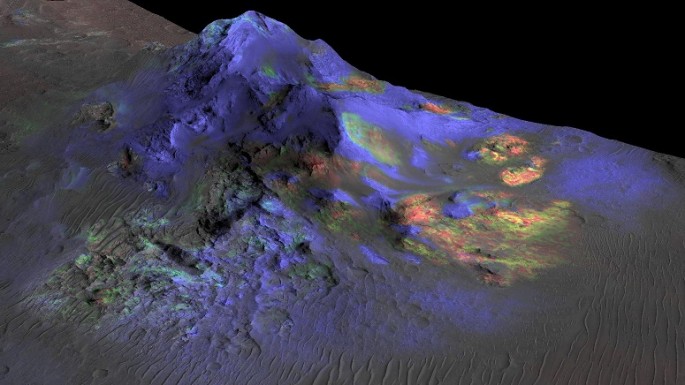Scientists believe that glass discovered on impact craters on the surface of Mars can suggest clues for evidence of past life on the Red Planet.
This molten glass is presumed to have been created with extreme heat during violent impacts from asteroids and meteors on the Martian surface where it could have preserved some biosignatures of ancient life during the time of the impact.
According to geologist Peter Schultz from Brown University, a similar process is also witnessed here on Earth. Schultz and his team found organic molecules and plant remnants that are preserved in glass created from an impact in Argentina made millions of years ago.
Brown researchers also believe that this meteorological process can also occur on Mars as they conducted a new study using NASA's Mars Reconnaissance Orbiter and its data to confirm the presence of impact glass on the Red Planet.
According to lead author Kevin Cannon from Brown University, the study that was presented by Schultz and his team is suggesting that glass can become pivotal in preserving biosignatures where this knowledge can be applied in the search for impact glass on the surface of Mars.
After intensive analysis, Cannon and co-author Jack Mustard revealed that their study confirms large deposits of glass in existence on a significant amount of impact craters found in different regions on Martian terrain.
During laboratory experiments, researchers have identified the spectral signal of the Martian glass where sunlight would be seen reflecting from it. This spectral signal is now used to create an algorithm so that this will be used to search for that signal from the wealth of data collected by the Compact Reconnaissance Imaging Spectrometer for Mars (CRISM) of the NASA orbiter.
According to Jim Green who is NASA's director of the planetary science division, the new analysis from this research reveals that glass deposits are apparently relatively common on impact features on the Red Planet.
These regions can can be targeted for future missions where robotic scientific explorers can map out the terrain of Mars to pave way for human colonies beginning 2030.
The target impact crater for the next mission on Mars is called the Hargraves where the region is a lead candidate for the landing site of the Mars 2020 rover mission of NASA.




























